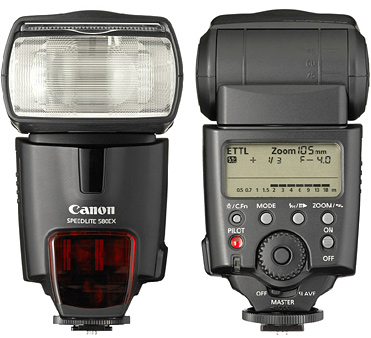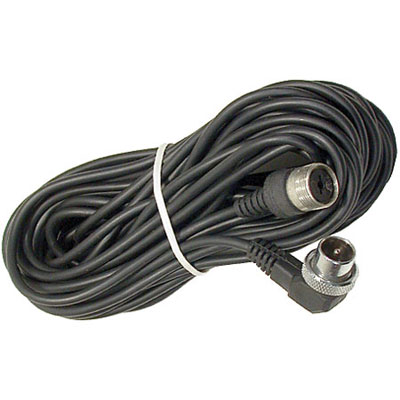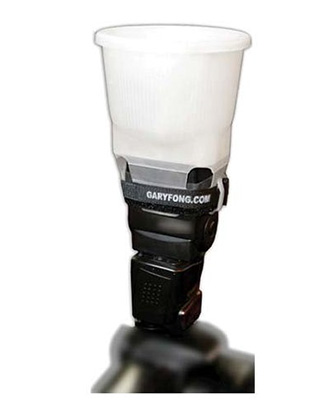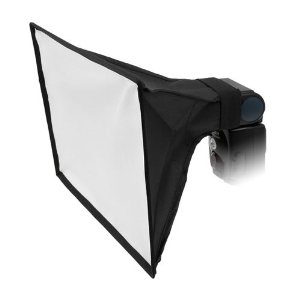12 ways not to mess with flash
 After three years of working with studio light, I thought I knew about the camera flash, if not all, then very much. Three weeks ago I came to visit one particularly experienced strobe player, who told and showed so much that I immediately realized that I had to sit down and do a rake census, and then test, test and test again.
After three years of working with studio light, I thought I knew about the camera flash, if not all, then very much. Three weeks ago I came to visit one particularly experienced strobe player, who told and showed so much that I immediately realized that I had to sit down and do a rake census, and then test, test and test again.Below are fairly well-known things that, however, caused facepalm to those who were with me or me. You can find something new in the rake list with some probability. If at least it is useful for using flash, it will be useful for you, then my task can be considered accomplished. Please note, the material in the technical parts concerns the operation of flash units and Canon cameras. For other brands, the general idea of using the same, but the specifics are somewhat different.
First jamb: shooting mode
It seems everyone knows for sure that shooting indoors is best in M, on the street in M or Av. Nevertheless, the moment that the camera takes almost no account of the possible light of the flash in the calculation of the exposure when it comes to the aperture priority (that is, the exposure is set as if it were not), became a surprise for many people.
')
Just in case: when working with a flash in a dark room, the shutter speed becomes almost negligible. If the proportion of natural (existing) light is only a few percent of the fraction of light given by the flash, then there is no exposure for us: the movement is frozen by a light pulse. Accordingly, the difference between 1/200 and 1/30 in practice will not be. It’s another thing if the share of local light is at least somewhat significant: in this case, a more or less long exposure can clearly show the blurring from shaking hands or from the movement of objects. If the camera in Av has decided that a long exposure is needed - this will happen.
Undecided background
It would seem the most logical in the room to exhibit the sync shutter speed and flash flash to the ceiling or somewhere else. But the shutter speed does matter for the background work, especially in large rooms that are not completely filled with the light of a pulse. The longer the shutter speed and the higher the ISO, the brighter the background becomes. Accordingly, in any more or less large room, we always have a choice between shooting an object on black and an object in a natural light environment. And, yes, I often have to raise the ISO, which is weird when working with a flash and, as it seemed to me, could only be used to save battery power.
Yellow background
If the main object is of a normal color, and the background is yellow - this is the problem of difference in color temperatures. The point is that the flash light is higher in temperature than the light from incandescent bulbs: a color conversion filter is needed, which leads its temperature to the temperature of other light sources. For incandescent bulbs, this is a yellow film stuck on the flash. White balance, of course, need to put on the lamp. With gas-discharge lamps, the film needs a characteristic pinkish.
On the street, constant peresveta
Everything is very simple: many people constantly forget to turn on the high-speed sync mode on the flash. The camera rests on an exposure based on the sync speed, and is forced to give an overexposed result. The general rule: went outside - turned on high-speed sync.
By the way, this mode works very interestingly: the flash quickly and quickly strobes, giving several impulses so that the frame is lightened evenly not in one moment of full opening of the shutter, but sequentially, in parts. Canon’s press release claims that in this mode, the flash consumes less power (but it seems to “land” the lamp more quickly). Demoded suggests that the impulse is obtained weaker, that is relevant at a distance of 4 meters. Ozgg said that the flash does not adjust to the curtains, but always hits at 50kHz.
Flat face
If there is more or less tolerable external lighting, in order not to make traditional “pancake faces” from a flash, you can simply enter flash power correction, for example, one or one and a half steps down. This will highlight the shadows, but not knock them out completely. It seems to be obvious, but it turned out that some make an exposure correction of the entire frame, and not the flash pulse.
Failed eyes
The flash "in the forehead" is rarely used, mainly in fast reporting or when you need to reach a distant object. If there is a choice, it is usually better to deploy it somewhere, move away from the camera or use a nozzle.
If the flash "bang" into the wall or (more often) the ceiling, you get a more or less realistic soft light, since the entire illuminated surface will become an independent source of light for the frame.
When reflecting from the ceiling, a characteristic gradient of shadows is obtained: under the objects they become darker and thicker, for example, the eyes go into the shadows. In such cases, it is necessary either to divert the flash more ago, or, if it is not possible, to use special nozzles. Good for the correction of gradients proved to be the bank of Harry Fong and her Chinese brothers.
Spotlight beam
The flash usually monitors the focal length of the lens and moves the lamp in the body to go to a wide or narrow angle. For a super-wide angle, it is assumed that you have a micro-pyramid card inside. Automation can be abandoned and, for example, at a wide angle of the lens, squeeze the flash pulse into a fairly narrow beam. This is true for highlighting a single object or vignetting with light.
Aiming in the dark
Sometimes there are situations when you need to shoot without a flash, but the focus is very difficult to catch. If the object is moving, you can often just skip the moment while the camera is spinning the lens. In this case, it is good to leave the aimed light (reticulum) of the flash, but to disable its triggering. It is made from the flash control menu from the camera: flash firing = disable (the menu is not on all cameras). The LEDs are working, the flash does not shine.
Flash not on camera
First, a small overview of how to connect:
- By wire with preservation of the full protocol of data exchange, that is, with the ability to use the flash in the machine (this cable is usually short);
- Long sync cable only "on the trigger", that is, the flash will work in manual mode;
- By infrared synchronization from a special device (it is morally obsolete: not suitable for the street, it is badly caught in large rooms with dark walls, it does not work under searchlights);
- By synchronizing with another flash or control unit from some cameras (the same limitations);
- By radio (the best option if E-TTL is saved, as, for example, in the Pocket Wizard system - but this thing is outrageously expensive). The obvious advantage is not only that the launch comes from 100 meters anywhere, but also that there is an additional thing in the system that allows you not to run to the flashes when you need to apply local settings to them or simply turn them off. We need three types of devices: control modules for each flash, the main module for the camera and the gadget on top, which acts as a kind of “mixing console” for three groups of flashes.

This cable allows you to simply start the flash in manual mode.

And this one - take it out from the camera's hot shoe.
So, if you visit the idea to buy a cable - it is better to solder yourself. External light traps are not very reliable and can also be made independently. IR transmitter is also soldered. It is actually relevant to take either the second flash (if you need more light) or, if you take it off seriously and for a long time, that Pocket Wizard or analogues. When choosing analogs, it is very important to understand that you need to receive E-TTL data so that the flashes can work in auto modes.
Stand - man's friend
Before I bought the first rack, I spent terrible sums on various gadgets in order to get a more or less decent result. It turned out that if it is not about reporting, then the best way is to just take a stand, put your head under the flash, insert a translucent white umbrella - and synchronize with the second flash that does not light up (or works as a fill). For the street does not prokanaet, but the rooms are almost perfect.
Another point: it is important to specifically direct one flash to the receiver of another, so that they fire from a greater distance. At least, turn the slave flash receiver towards the main one.
Nozzles: how not to buy too much
With a flash of Canon, there are two nozzles: a white card for the glare in the eyes (it reflects very, very little), and a plastic piece with micropiramids for dispersion. A number of Nikon models, by the way, immediately have conversion filters. One more nozzle can be made from a sheet of paper attached in the form of a cone behind the flash (the famous “burdock”, it is also a “fan”, it is also a “photon reflector”).
Now, about what is worth and what is not worth buying:
- White plastic "box" is almost not needed
- “Burdock” with holes on top is good, but the next option is better.
- Harry Phong's “jar” (transparent) just gives a normal beat to the ceiling and at the same time eliminates heavy gradient shadows, but you need to get used to it. Considering the wild holivars about her, better not believe me and twist it in your hands yourself. There are many analogs 2 times cheaper.
- A large soft box on the flash leads to softening of the light and allows you to use it in the forehead. Needed for reporting, in other cases, the next item is better. You can run with flash and soft box in your hand.
- Beauty Disch (plate) or an umbrella to the light - it is very beautiful, but only on the racks. From 2-3 light sources it turns out a mobile studio.
- “Ceiling” - a round matte nozzle - good for shooting interiors, but not very suitable for people.
- Strobofraim (handle + fasteners for flash) in different configurations is good, but difficult in real shooting, because heavy. On the lover.
- Honeycombs are important for forming a narrow beam of light, often interesting.
Of course, of all this and more, there are dozens of variations. Until you try to practice in different lighting conditions - you are still not immune from unnecessary purchases.

"Bank" Phong, it is in the first inflexible versions - "Toilet"

Almost unnecessary in practice diffuser

Medium softbox, relevant to drawing source in some cases.
It is worth remembering that the softness of light is determined by the angular size of the source (and, to a lesser extent, by reflection from the walls): if you take a large soft box and blow it far, far away, it will become a point. If you need long beautiful gradients - use large nozzles, which often mean that you will need racks or assistants.
About flash
First, a quick educational program: a flash in E-TTL mode before the frame sends a preliminary impulse (or a series, by default, at 1/32 of the power). Based on what was “seen” in the frame as a result of the actual passage of light through all nozzles and reflections from all surfaces, a forecast of the required power is made. During the frame shot, the flash sends a calculated pulse. Automatics are now very smart, so you can safely take about 90 percent of the frames in a flash machine. Manual mode is needed when you want to control the impulse clearly: in this case, the flash hits a single impulse of a given power (this, by the way, is at the same time one of the ways to start studio light on light traps).
Excess can make a person start to blink. If this is the case, then you need to do either FEL (fixing the exposure, the button with an asterisk) - then the flash will be long before the frame itself - or go into manual mode. The same FEL in combination with turning the flash head, by the way, allows you to properly expose a person to the edge of the frame against the window, for example.
What to see
- Instructions on the DIY assembly of synchro devices are here , plus they are good and efficient in the assortment, including methods for assembling the correct sync cable from the landfill.
- The program of the system practical course on working with mobile light (Alexander is leading, to whom special thanks are due to the clarification of much of the above). If you google, you can find many more one-time seminars from 4 hours to a couple of days.
- Illustrated tutorial on portraying Zeltsman : note, very prehistoric, and with that an interesting book for working with mobile, and for working with studio light. This is the question of how to build a light scheme, and not to solve technical details.
- Strobist.ru - a lot of useful things about flash in Russian.
PS I, of course, can be mistaken somewhere, somewhere I don’t know something, and so on. If your experience with flash is much more, please share it in the comments. The material in no way claims to be complete: in each topic here you can dig for long months.
Source: https://habr.com/ru/post/114937/
All Articles